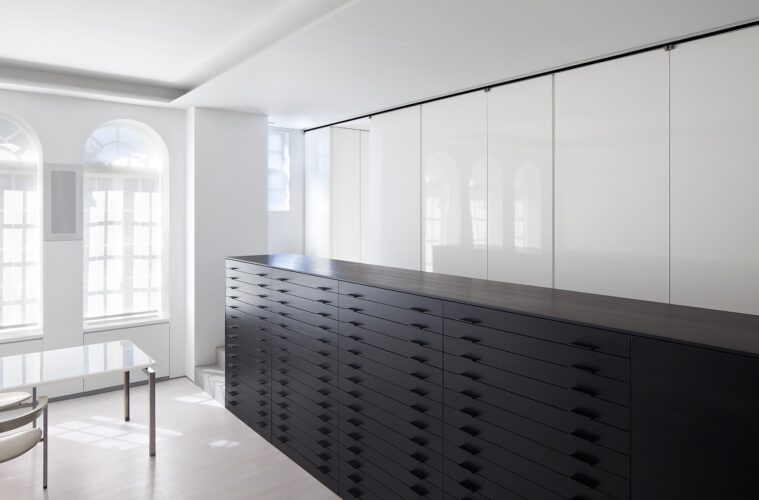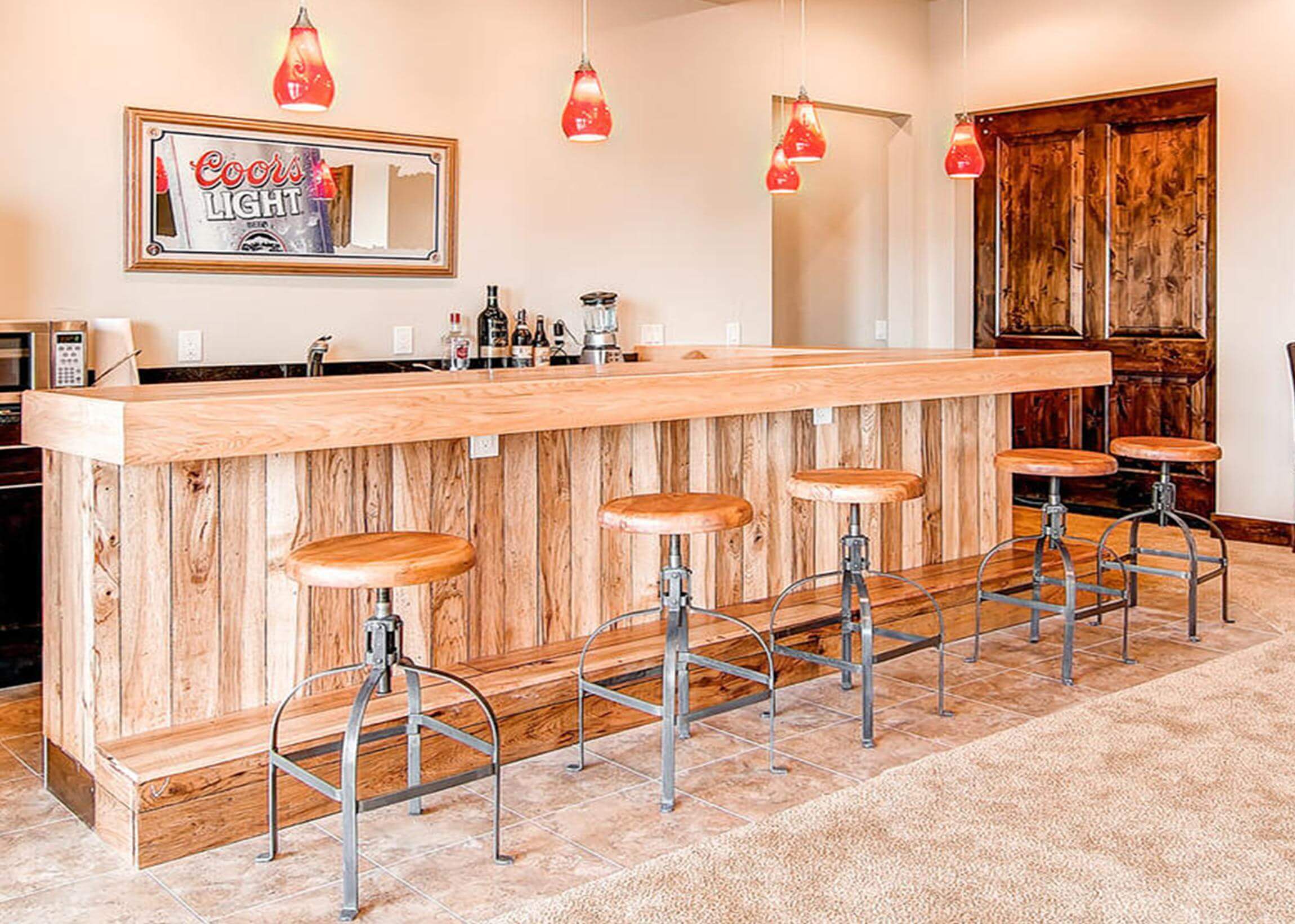Are you team minimalism or maximalism? In reality, there’s no need to pick sides. You can seamlessly blend both styles within your home.
Rather than committing to a single style, consider the art of mixing and matching to craft an engaging and unique aesthetic. Explore the maximal minimalism tips to experience the home you’ve always wanted.
But before that, let’s examine the difference between minimalism and maximalism.
Minimalism vs Maximalism
Minimalism is a design philosophy prioritizing simplicity and negative space. This aesthetic dates back centuries and is characterized by clean lines, uncluttered surfaces, neutral color tones, and minimal ornamentation. It gained prominence in the mid-20th century as a reaction to the extravagant designs of the Art Deco period.
While minimalist design has persisted as a favored style, it has evolved, often intersecting with modern and postmodern aesthetics reminiscent of futuristic, space-age design. This approach continues influencing house and interior design, maintaining its relevance in contemporary contexts.
On the other hand, maximalism is a design style characterized by embellishments and decorations, contrasting minimalism’s simplicity and lack of adornment.
In maximalist design, the emphasis is on abundance rather than restraint. Instead of clean lines, intricate accents take center stage. The use of color, sheen, and texture is exuberant and diverse, contributing to the eclectic nature of maximalist spaces.
This style extends beyond mere aesthetics, as maximalism can be applied across various design elements, including architecture, fashion, and interior design.
In recent years, there has been a resurgence of interest in maximalism, with more individuals embracing its departure from the starkness of minimalism. Maximalism often intertwines with vintage, Victorian, retro, and Art Deco influences.
Getting the Best of Both Worlds
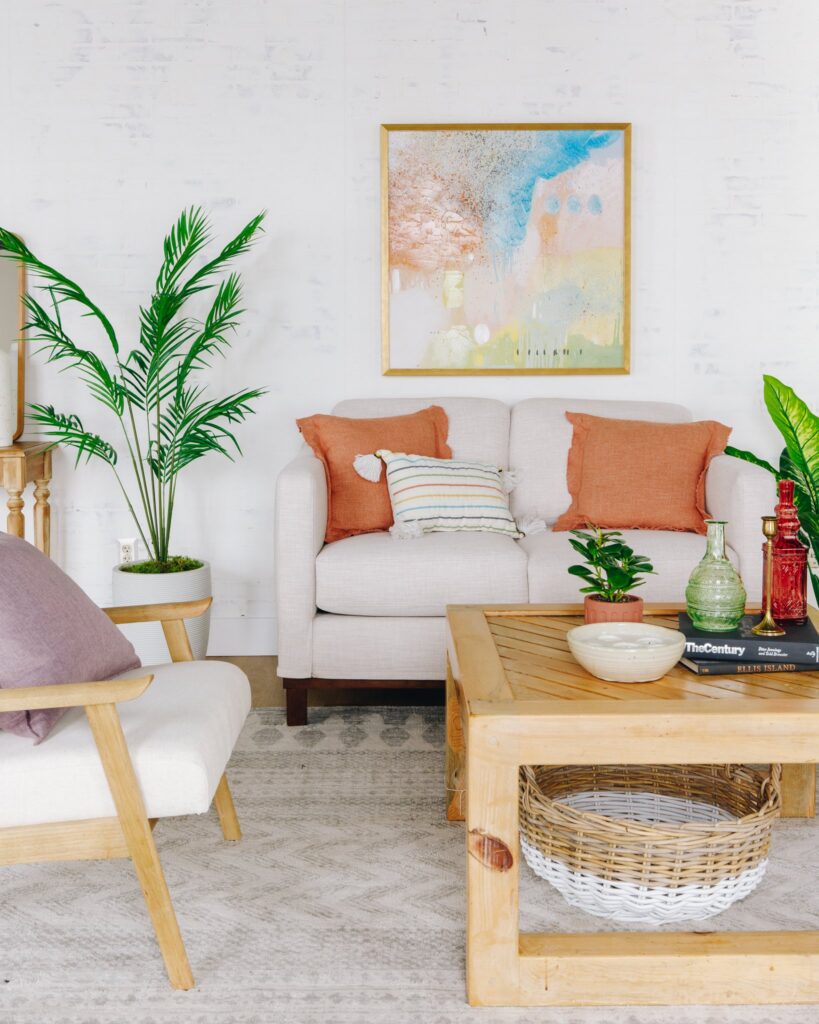
source: pinterest.com
Combining maximal minimalism principles may seem like an unconventional design approach, but it can create a visually exciting and harmonious space. Below are some tips on how to blend these contrasting styles successfully
1. Get a feel of the space
Begin by assessing the overall ambiance of the space. If it tends toward a minimalist aesthetic, introduce maximalist accents strategically. Consider adding a statement furniture piece or an attention-grabbing light fixture to infuse energy and vibrancy.
Conversely, if the room exudes a more maximalist vibe, establish a sense of balance by incorporating minimalist elements. You can achieve this through crisp white walls, straightforward window treatments, and furnishings with rounded and simple lines.
By juxtaposing these minimalist touches within a maximalist setting, you create a harmonious blend that enhances the visual interest and coherence of the space.
2. Mix and match decorative elements
After establishing a solid foundation, mix and match different pieces to craft a distinctive look tailored to your space. Maintain a keen awareness of the room’s overall ambiance and color palette, ensuring a cohesive and seamless integration of elements.
Whether combining contrasting furniture styles, blending minimalist and maximalist decor, or experimenting with various textures, the key lies in preserving a unified theme.
By thoughtfully curating your selections, you can achieve a space that is not only unique but also harmoniously tied together, reflecting your style and creating a visually compelling environment.
3. Start with a neutral base
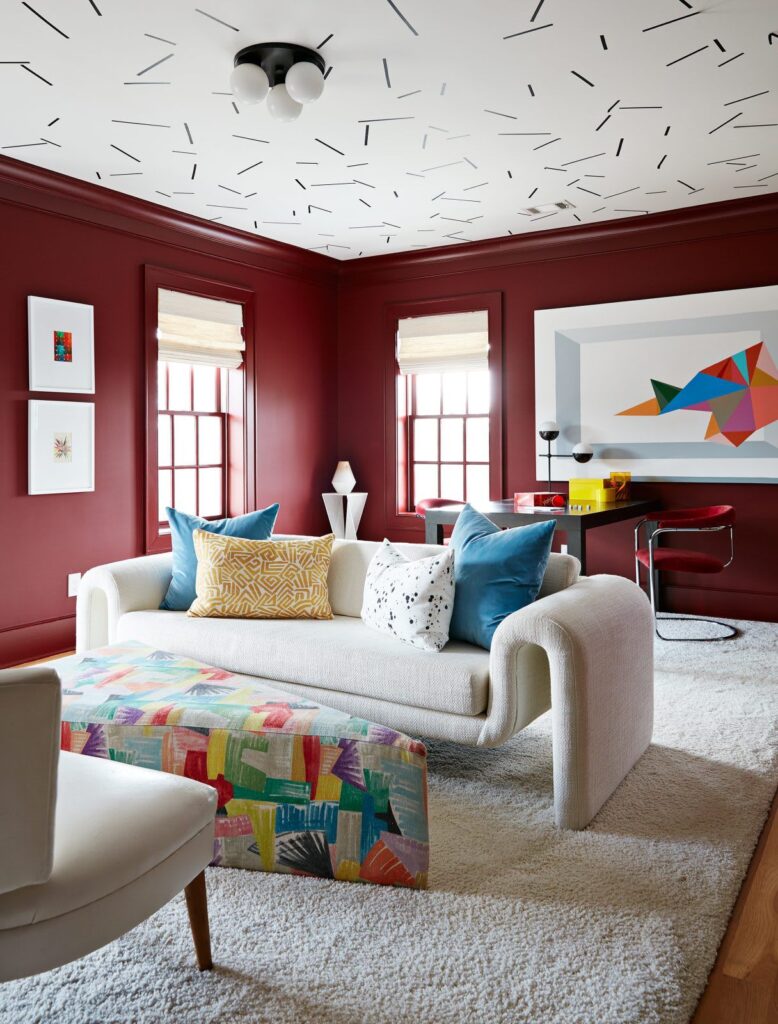
source: pinterest.com
Initiate your design journey by establishing a neutral base. This step sets the foundation of the space, providing a cohesive backdrop for your creative endeavors. Once you’ve set a neutral canvas, introduce bursts of color and pattern through carefully selected furnishings and accessories.
You create a versatile and timeless foundation that accommodates various design elements by beginning with a neutral palette. This approach enhances the visual appeal of the space. It allows for flexibility in experimenting with different styles, ensuring a harmonious and well-balanced aesthetic.
4. Embrace maximal minimalism with bold statements
Opt for eye-catching centerpiece furniture, vibrant colors, or large-scale pieces of art to set the tone for the entire space.
Consider investing in a statement sofa or chair in an asymmetric, daring design to capture attention immediately. Alternatively, introduce an extroverted rug in a vibrant color or pattern, creating a focal point that defines the maximalist minimalism style.
For an impactful wall display, choose grand pieces of art featuring vibrant colors and abstract, bold shapes. These larger-than-life wall pieces contribute to the maximal-minimalist aesthetic, commanding attention and transforming your walls into dynamic attention points.
5. Blend light and dark elements
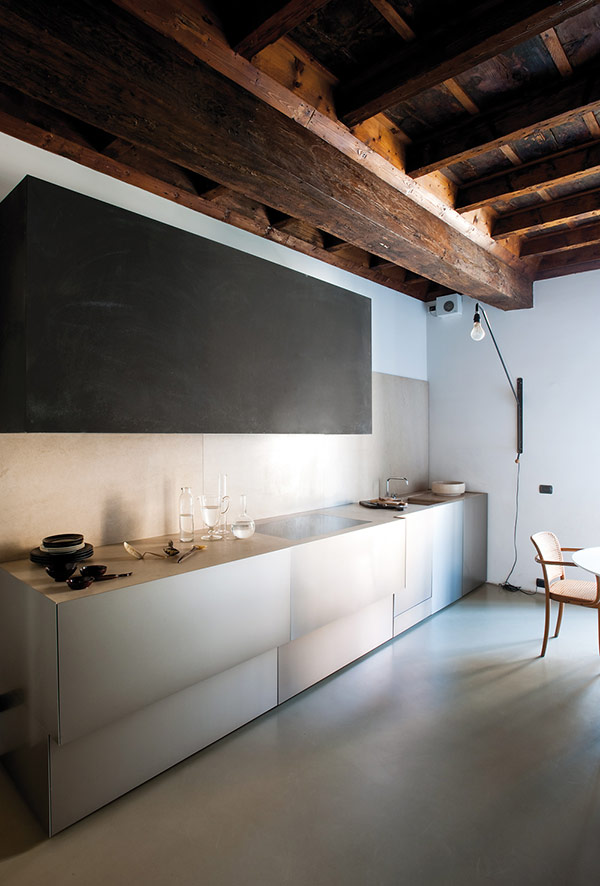
source: pinterest.com
Enhance the visual dynamics of your space by incorporating a balanced blend of light and dark elements. This interplay of contrasting colors adds visual interest and depth, creating a more dynamic and engaging atmosphere.
To further elevate the ambiance, embrace the technique of layering different textures. Introduce various tactile elements, such as soft fabrics, textured rugs, or sleek surfaces. This infusion of diverse textures adds dimension to the space and creates a more inviting and cozy environment.
The artful combination of light and dark elements and the layering of textures create a rich and harmonious visual tapestry that transforms your space into a stylish and welcoming haven.
6. Try maximal colored minimalism for vibrant energy
Bid farewell to the neutral color palettes of traditional minimalism and usher in a lively spectrum of shades that infuse every room with dynamic energy.
Pairing vibrant colors with clean-lined furniture ensures that the overall look remains well-balanced and harmonious, never veering into overwhelming territory. Fusing lively hues and minimalist design creates a refreshing contemporary aesthetic.
The beauty of this approach lies in its versatility. You need not invest in entirely new furniture; instead, introduce decorative accessories to enliven your space.
A stylish tile for your kitchen, a striking vase in vibrant colors, or bold-patterned throw pillows can have the same transformative effect as a new piece of furniture. This design allows you to experiment with maximal colored minimalism in a budget-friendly and flexible manner, injecting personality and vibrancy into your living spaces.
7. Achieve maximal minimalism with crisp white walls
In maximal minimalism, using bold colors doesn’t require repainting your walls. Instead, leverage the timeless elegance of white walls as a contrasting backdrop for your interior decoration.
Given the art-centric nature of this trend, you can treat your unpainted walls like a blank canvas. Against this neutral background, elements such as a vibrantly colored chair or sofa, a bold vase, or a statement piece can take center stage, effortlessly becoming the space’s focal point.
The white walls are a versatile foundation, allowing the maximalist elements to shine and infuse the room with character and dynamism. This clever interplay between minimalist wall color and maximalist decor creates a visually striking and well-balanced environment.
8. Flaunt your belongings in maximal minimalism
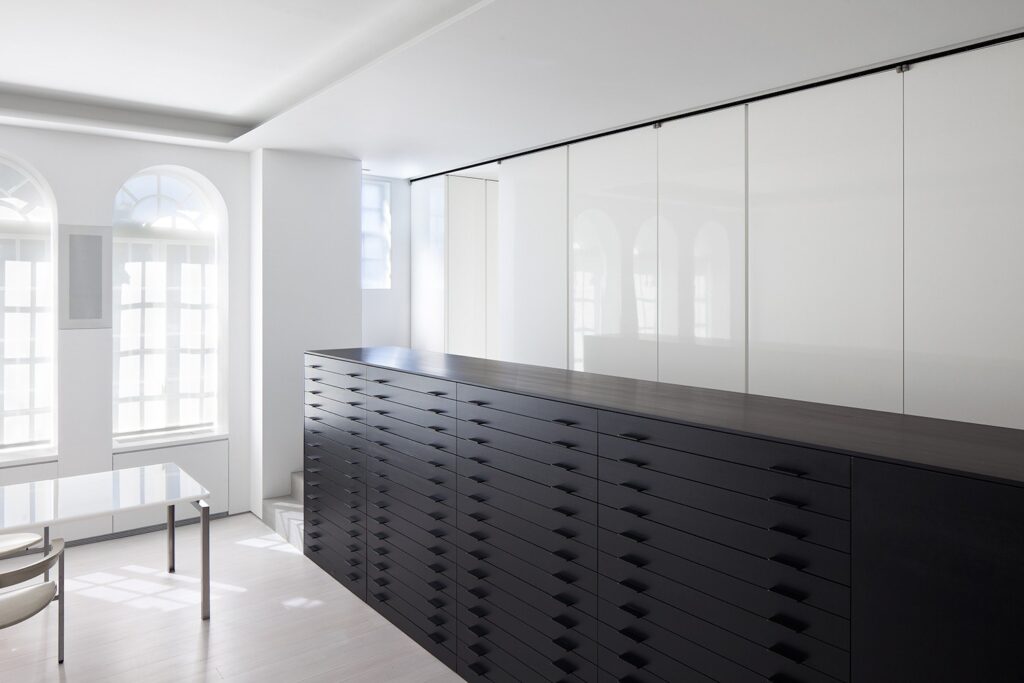
source: pinterest.com
In maximal minimalism, there’s a departure from the decluttering ethos of traditional minimalism. Here, you’re not only permitted but encouraged to showcase your possessions. The key is establishing dedicated areas and creating maximal minimalist interiors to proudly display your cherished finds, avoiding a scattered arrangement throughout the room.
By purposefully grouping your items and maintaining clarity in other areas of the room, you create intentional contrasts that infuse the space with a dynamic quality. This approach allows you to showcase your belongings without sacrificing the overall sense of organization and intentionality.
In maximal minimalism, displaying your collection becomes a curated and deliberate expression, adding depth and character to the living space.
9. Practice minimal maximalism
It’s essential to remember that the maximal minimalism trend is, at its core, still rooted in minimalism. Therefore, resist the urge to overdecorate by avoiding excess objects or creating overwhelmingly cluttered gallery walls.
In this style, the emphasis should be on selecting furniture, art, and accessories that significantly impact rather than attempting to maximize quantity. Strive for a carefully curated and intentional aesthetic, ensuring that each chosen element contributes meaningfully to the overall design.
10. Add a personal touch
Infuse your space with a sense of individuality by incorporating personal touches. Introduce elements such as family photos, cherished art pieces, or greenery to add a touch of your personality to the surroundings.
These items contribute to the space’s aesthetic appeal and foster a sense of warmth and familiarity, making the environment feel like home. By integrating personal touches, you create a narrative within the space, telling a story that is uniquely yours.
Whether displaying sentimental objects, showcasing artwork that resonates with you, or bringing in the vibrant energy of plants, these personal elements play a crucial role in elevating the emotional connection to your living space.
Balance Is Still the Key
While maximalism allows for bold and expressive design statements, moderation is key. Excessive use of ornate elements can overwhelm a space. When employed thoughtfully and in moderation, maximalism can infuse a sense of luxury and opulence into any environment.
Maximalism is the perfect choice if you want to make a daring and expressive design statement. You can achieve a harmonious and visually compelling living space by balancing maximalist expression and minimalist principles.

